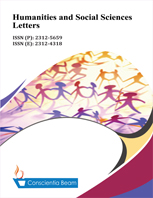Evaluation of the characteristics of children with autism spectrum disorder in Vietnam
DOI:
https://doi.org/10.18488/73.v11i2.3312Abstract
Autism spectrum disorder (ASD) is a developmental disability that causes lifelong impairments in physical, psychological, and social functioning. This disorder manifests when a baby is still in the womb and is detected around 24 months of age. Sixty children who attended part-boarding individual hours were transported to the Nhan Tam Children's Education and Counseling Center and Quang Ngai Provincial Psychiatric Hospital for intervention and evaluation; they were assessed for ASD using the Childhood Autism Spectrum Disorder scale (CARS) and were the subjects of our study. Before their involvement, the researcher explained the purpose of the research to the participants and received their informed consent. The results showed that 75% of the children had a severe form of ASD, whereas 25% had a mild or moderate type. Indicators of verbal and nonverbal communication were prominent among children with ASD. In terms of average test scores, we found a difference between children of stable-income parents and those from disadvantaged households. This offers a basis for educators, clinicians, and sociologists to implement education, intervention, and treatment for children with ASD, as well as to enhance awareness about this condition so that parents pay more attention to their children.

